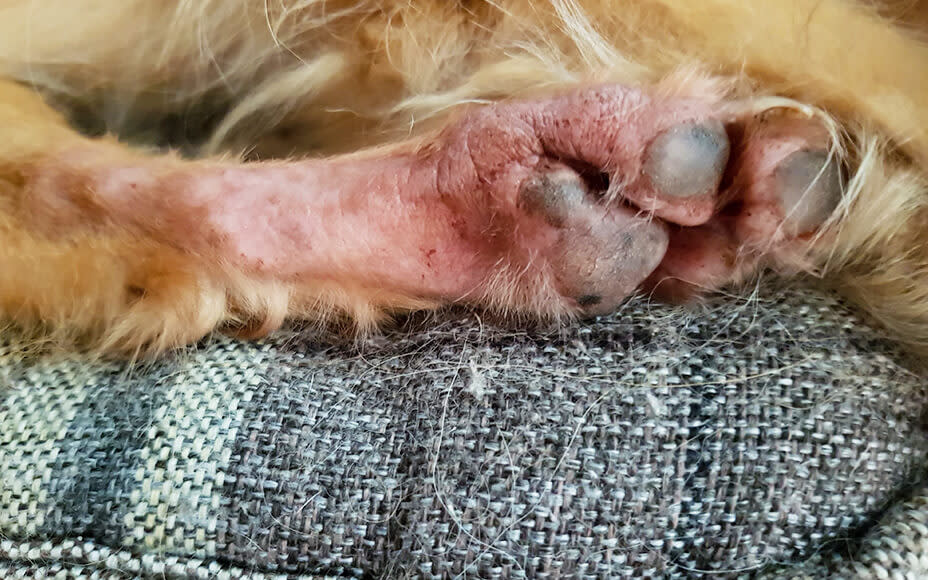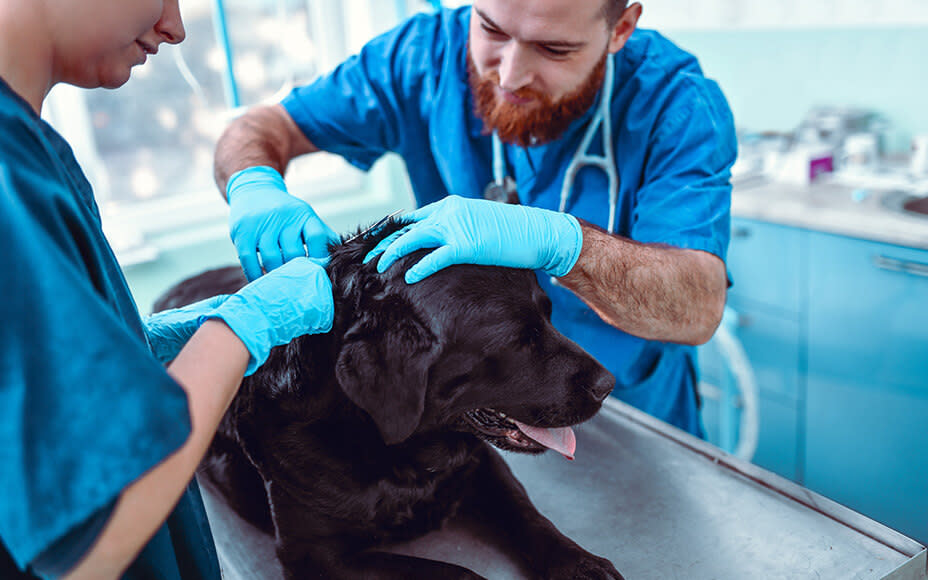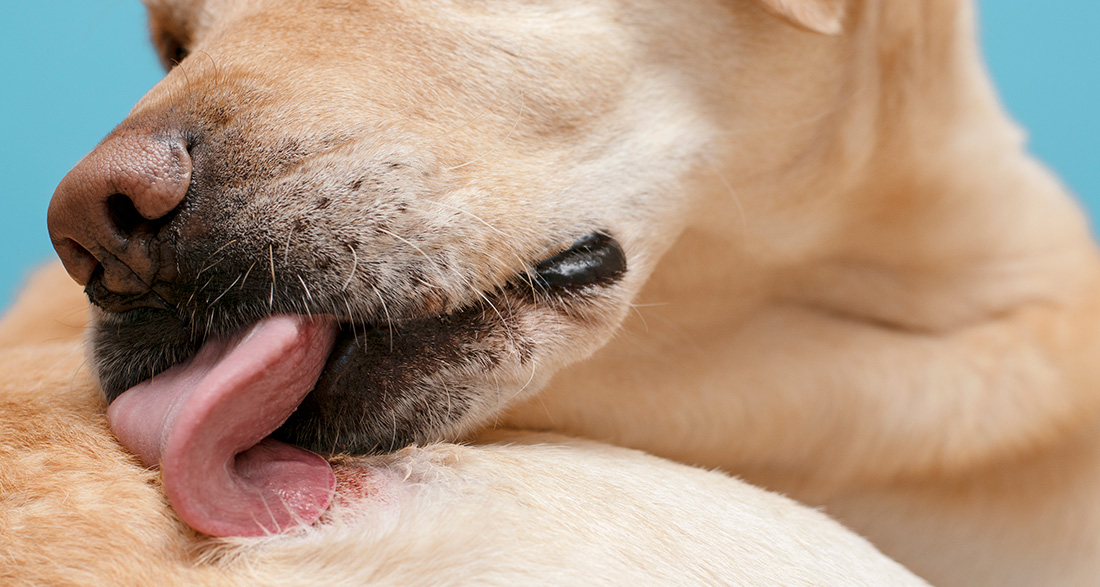Lick dermatitis, or lick granuloma, is a skin inflammation that arises from increased licking. Learn more about the treatment and how you can prevent lick dermatitis in your dog.
Lick Dermatitis in Dogs
Grooming is a part of a happy dog’s life, that’s clear. However, if your furry friend incessantly licks its paws, and the skin appears reddened, you should take notice. Lick dermatitis, or lick granuloma, is a skin inflammation resulting from increased licking. In this article, you’ll learn everything important about underlying causes, diagnostics, and treatment.
Causes of Lick Dermatitis
Lick dermatitis is not a disease itself; rather, it is a symptom of an underlying problem. The increased licking damages the skin surface, allowing bacteria from saliva to penetrate the skin layers. This leads to skin inflammation, which, in turn, causes itching and more licking—a vicious cycle. The legs and paws are often affected.
Common causes of lick dermatitis include allergies, stress, and pain.

Allergy:
Allergic reactions can cause not only diarrhea or bloating but also itching and skin changes.
Your dog will try to alleviate the itching somehow. Scratching, biting, or increased licking temporarily combats the itch, but it results in skin inflammation and even more itching.
Allergies to flea saliva are particularly common causes of lick dermatitis. With flea saliva allergy, affected dogs react strongly to minimal flea infestation, showing severe symptoms such as intense itching. Food allergies or contact allergies are also possible causes.
Quick Tip:
Our Sensitive wet food and dry food are hypoallergenic and appealing to dogs with food allergies. Uncertain about the right food? Take a look at our products specially designed for dogs with allergies and dietary intolerances!
Stress:
Our beloved four-legged friends can also experience stress. Altered daily routines, a new family member, or relocation, for example, can be causes of increased stress. Some dogs start licking their paws and legs to cope with stress, leading to lick dermatitis.
Pain:
Arthritis-related joint pain can also tempt our dogs to lick more on the painful areas, leading to inflammatory skin changes.
What Does Lick Dermatitis Look Like in Dogs?
The symptoms accompanying lick dermatitis depend on the underlying condition.
Common signs associated with lick dermatitis include:
- Itching, resulting in increased licking, scratching, and biting
- Redness of the skin with or without purulent deposits
- Hair loss at the affected areas
- Fever and reduced general well-being in cases of deep skin inflammation

How Is a Diagnosis Made?
An extensive medical history is crucial, especially for skin changes. Provide your veterinarian with detailed information about when specific symptoms began and anything else you’ve noticed.
Diagnosis involves a general clinical examination and a specialized skin examination. It may be useful to take a sterile swab sample from the affected skin areas. This allows your veterinarian to examine under the microscope for the presence of bacteria or fungi in the inflammation.
As you’ve already learned, lick dermatitis always has an underlying condition causing the symptom. To determine if flea infestation is behind lick dermatitis, your veterinarian will examine your four-legged friend for fleas.

If a food allergy is suspected, an exclusion diet and an allergy test may be recommended. To confirm or rule out arthritic pain, an X-ray may be helpful.
What to Do About Lick Dermatitis in Dogs?
Lick dermatitis itself is washed and cleaned with anti-inflammatory shampoos. Your veterinarian will show you exactly how to care for the affected skin at home.
If necessary, antibiotics in the form of tablets may be prescribed to combat inflammation. To relieve itching, cortisone may be injected or given to you as tablets to take home.
The treatment of the underlying condition varies depending on the cause. For flea infestation, flea medications are used. Food allergies can be confirmed through an exclusion diet, and symptoms can be avoided in the future. Pain relief is achieved with pain medication, and stress-related lick dermatitis can be addressed with the help of a dog trainer.

Can I Do Anything Preventive?
To prevent flea infestation as a cause, adequate flea prophylaxis is crucial. Consult with a veterinarian to determine the best product for your furry friend. There are no specific preventive measures against other causes.
Most importantly, recognize the symptoms and don’t dismiss excessive paw licking as normal behavior.


